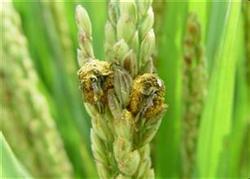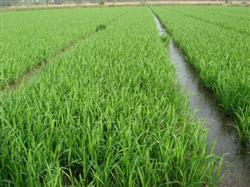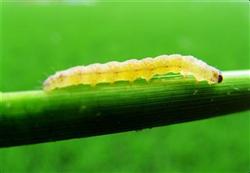What are the key points for the prevention and control of rice false smut?

Rice is susceptible to disease at heading and flowering stage, and the pathogen is harmful to some grains on the panicle. At the joint of Yinggu, the yellowish green block was exposed, gradually expanded, and finally wrapped in the whole glume shell, the shape was 4 times larger than that of healthy grain, it was dark green, the surface was smooth, then cracked, and dark green powder was scattered. The weather is closely related to the occurrence of rice false smut. The occurrence of rice false smut is serious in continuous rainy and humid weather, and too much nitrogen fertilizer is applied, resulting in green and late ripening of rice, which will aggravate the occurrence of disease and increase diseased panicle and diseased grain accordingly. The medicine is generally required to be used twice, and the last leaf of more than 3 stems in the whole field is extracted for the first time, that is, the medicine is used when it is commonly known as "big packing" (about 7 days from the time of heading), which is the peak period of the initial infection of the pathogen, so, seize the opportunity to use the medicine in time, the control effect is the best. In order to consolidate and improve the control effect, the drug was used again at the first heading stage of the break for the second time. Jinggangmycin, carbendazim, difenoconazole and propiconazole can be used as required.
- Prev

Fertilizer requirement characteristics and fertilization principles of Rice
Crop production is affected by many factors, and fertilization conditions are ever-changing. If we understand the fertilizer requirements and principles of crops, we can adjust measures to local conditions. It is suggested that fertilization should be framed within a reasonable range. Basic principles, including other agricultural measures, are designed to help farmers broaden their minds when analyzing and solving practical problems.
- Next

Control techniques of common diseases and insect pests in rice
A bacterial disease in the leaves of rice. The pathogen is a pathogenic variety of rice yellow unicellular rice in prokaryotes. The bacteria are immersed in the wounds and pores of the roots, stems and leaves and multiply in the ducts of the vascular bundles. Seedling stage and tillering stage are the most vulnerable. Most of the seedling leaves showed the symptom of leaf withering. In the infectious product.
Related
- The first cup of black tea in spring, the flavor and history of tea gardens in Kenya, Africa
- The computer can not only choose potatoes, but also grow tea rice. AI will grow winter oolong tea champion.
- It is not only the inflated tea bitten by insects, but also engraved with the four seasons tea in Beipu.
- The Oriental Beauty Tea Festival in Zhuxian County takes the stage at the weekend to experience the plus-size feast of oil tea.
- & quot; Oriental Beauty Tea & Exploration of Emei in Hsinchu, the hometown of quot;
- The new variety of strawberry "Tainong 1" dessert is the first choice with mellow aroma. Crimson gorgeous
- History of Tea in Taiwan: from Wild Inner Mountain to Export Tea Garden
- Two types of Taiwan Oriental Beauty Black Tea won the British three-Star Award for Childhood Tea Xiang Zhang Jiaqi changed from pilot to champion tea maker.
- Banana species and varieties: the planting history of Taiwan Xianren banana and dwarf banana is long, is banana disease resistant?
- Coffee planting Technology: Qianjie Coffee from Seedling to harvesting

